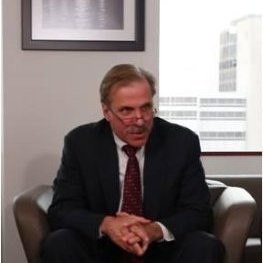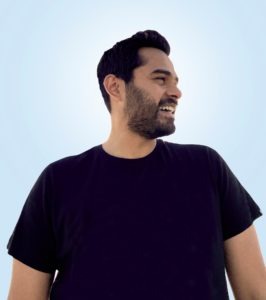Staying Alive: Three Takes on Today’s Senior Living
|
| Based on interviews with Judah Ronch, PhD, Erickson Retirement Communities; John M. Parrish, PhD, MBA, The Erickson Foundation; and Jamison Gosselin, Sunrise Senior Living |
| Who knew it could be this way-people having fun in their retirement and on into their long-term care years. Retirement was once thought of as a time to kick back, relax, and put up one’s heels until one’s toes turned up. As for long-term care-well, let’s not go there. Much of that thinking persists today-witness President Bush’s moans about “getting old” as he turned 60 this July. But as it turns out, that thinking is outmoded-in fact, it is being turned around 180 degrees by today’s pioneers in organized senior living. Two companies that have developed reputations for keeping aging residents “up and at ’em” in literally hundreds of ways are Erickson Retirement Communities and Sunrise Senior Living. Erickson has 18 communities serving more than 17,000 residents in eight states. Sunrise has 423 communities serving 51,000 residents throughout the world. Both have developed experience and research that shed light on the challenges faced by long-term care facilities looking to survive the market that confronts them in the early 21st century. Recently, top spokespeople for those organizations shared philosophies and insights on the new senior living regime with Nursing Homes/Long Term Care Management Editor-in-Chief Richard L. Peck. Judah Ronch, PhD, Vice-President for Resident Life, Mental Health and Wellness, Erickson Retirement Communities This goes directly counter to the traditional way of looking at aging; i.e., a time when one slows down and disengages from life. This protective, or self-protective, approach was based actually on an artifact of the aging research conducted during the mid-20th century. When aging was studied, it was studied in nursing homes, involving obviously the most needy and frail of the elderly, but extrapolated to the general population. A viewpoint opposite to “disengagement” is that successful aging means maintaining an active lifestyle. George Maddox, PhD, at Duke University, however, found that successful aging is actually a combination of both. At any age, one should do what one enjoys and is capable of and let go of that which one can’t or prefers not to do anymore. And stress isn’t necessarily the enemy. Rather, successful aging is a matter of managing stress successfully, not avoiding it entirely. At Erickson we translate this approach to actual resident lifestyles by getting to know each resident personally at the time of admission. Once we have determined preferences and needs, we can help to link each resident throughout his or her stay with the appropriate resources to engage with life and optimize good health. Also, our staff is formally trained to observe and evaluate each resident’s behavior in terms of that individual’s “norm.” Servers in the dining room, housekeepers, and transportation drivers, for example, don’t look at stereotypical behaviors of aging, but rather at a resident’s personal patterns of behavior and any noteworthy deviation from those. They’re trained to report apparent deviations the same day to their supervisor, who will then notify the resident’s social worker. I’ve come to be amazed at how well our employees get to know residents from day-to-day contact and observation. Another check on things comes from the resident community itself, which is quite alert to changes in individual members’ behaviors. We are geared, of course, toward accommodating increasing disability with age. But we have a very strong emphasis on promoting fitness and function to the extent possible and not falling back too easily on the next level of care, such as assisted living. Do all residents make the effort to live actively? No, not everyone does, but many do. They’re finding they can do things here they couldn’t do at home because the services and supports are here and readily available. But even for those who don’t wish to be personally active, just sitting and watching activities-so-called “passive participation”-can in itself be beneficial. In general, the normative of aging is changing with our resident population-it is moving away from the traditional view of aging as a time to disengage. A lot of this has to do with personality-some people are naturally more adventurous and less limited by social expectations, and those are the people who thrive here. But even those who tend toward a more conservative stance are beginning to understand that there are realistic possibilities for them here. Both they and their families are becoming aware that there are ways for a resident to avoid becoming too dependent on others too soon. As for those families who tend to be overprotective, I found during my years as a provider that setting up a “negotiation” between them and their loved ones can be very productive in reaching a viable compromise, while keeping the provider out of having to side with one party or the other. In my two years here I have seen this proactive philosophy work out well for residents, and there are some individual stories that are quite inspiring [see sidebars]. |
| For more information, please e-mail Dr. Ronch at jronch@ericksonmail.com. |
| John M. Parrish, PhD, MBA, Executive Director, The Erickson Foundation We’ve been conducting research and development projects for the past seven years, in collaboration with top-drawer experts based at universities, academic medical centers, government agencies, or private businesses. Projects in our portfolio focus on such concepts as “active” and “positive” aging, with an emphasis on “aging with choices” in regard to residential housing, health and wellness, and social, educational, and personal development options. A sampling of our current original research investments in best practices advances for optimizing late life would include VIVA! (a resource center focused on wellness screening and health education), Fitness & Function for Falls & Fractures Risk Reduction (a multidimensional campaign in support of balance and functional mobility among active adults), and Interventional Field Trials Focused on Neurobics (curricula focused on methods to enhance brain health among those worried about memory decay). Past projects have included studies of brain-behavior correlates of physical activity in the oldest old, falls risk screening in the oldest old, effects of tai chi chuan on lower extremity strength and fear of falling, and participative ergonomics for resident and worker safety in skilled nursing facilities. It has become clear in recent years that people are increasingly living through at least 25-year retirements. They basically fare well in the first 10 years or so, doing things they’ve always wanted to do but didn’t have the time for. The next 15 years or so, though, are often fraught with challenges. How the person negotiates these challenges or, for that matter, even accepts them has a lot to do with whether so-called “successful aging” is achieved or not. We are very interested in learning more about the self-managed investments in health and wellness made by those adults who are most resilient in responding to these challenges. Cognitive behavioral psychologists contend that a person’s thought processes influence their emotions and behavior. A negative mind-set may lead to poor decision making, thereby contributing to a cycle of frailty. Preconceived notions of aging-marked by a passive acceptance of one’s limitations attributed to one’s age per se-can result in a self-fulfilling prophecy. Of course there are well-documented changes associated with aging. But one key “success” is one’s adaptability to these changes despite them, and the self-determination to leverage them for good. Many relatively healthy centenarians and nonagenarians have gotten there because of their capacities to exercise perspective, to cope, to adapt, and to be optimistic. For example, I have a close and very special relationship with a 102-year-old cousin who is doing remarkably well cognitively and emotionally, and reasonably well physically. She is a rich resource of both wise counsel and belly laughter, who is revered far and wide by family and friends as the “life of the party.” She monitors the equity markets and invests weekly, has her own cell phone and laptop, and sees these as blessings. When asked to reflect on the good old days, she typically responds by saying “there are no better days than today.” She exemplifies what we are trying to learn and then demonstrate through our VIVA! longitudinal project on health and wellness in late life, which is focusing not nearly as much on absence of disability or disease as on the choices that active adults make to enhance their quality of life. The question is, who are these people who are doing so well in old age, and how are they doing it? Previously, many experts allocated much of their time and effort to discovering the diseases and disabilities associated with aging. Now we are increasing investing in discovering people’s strengths, capacities, and preferences, as well as their needs, during late life. This emphasis on the positive attracts more and more active adults to partner with us, based on their curiosity and sense of altruism, as well as their self-interest. For example, our Fitness & Function for Falls & Fractures Risk Reduction project, which we have framed as a personal investment in fitness and function for independence, has caught on with our oldest old, who have lined up to participate in our balance and functional mobility classes. In general, focusing on the positive is very appealing to our residents. |
| For more information, please e-mail Dr. Parrish at jparrish2@ericksonmail.com. |
| Jamison Gosselin, Manager of External Communications, Sunrise Senior Living Basically, we have three facets to our approach to resident-centered care. It starts with the mind, making sure that the mind is continually engaged. We have debate clubs, cultural trips, and special guest presenters, such as the former Foreign Service officer in the Washington, D.C., area who conducts Friday discussions of news reports from the Washington Post with local Sunrise residents, many of whom are former government employees themselves. The second piece focuses on the body-providing weight rooms, cardiovascular fitness machines, Jazzercise, aerobics, chair exercises, organized walking, and the like. The third piece is nutritional. Part of the Individual Service Plan we develop for each and every resident is identification of dietary preferences and any special requirements to accommodate diabetes, hypertension, or other conditions. These individual charts are posted in the kitchen to guide dietary personnel in setting up meals. Part of this also involves hydration, which can be an acute issue with older people, who can lose their sense of dehydration and end up developing urinary tract infections, among other disorders. For between-meals hydration, most residents have access to 24-hour bistros and, on hotter days, our staff goes from room to room with water and other cooling drinks. For people with Alzheimer’s disease, we tend to focus more on their emotional lives and on their relationship with the past. We have “life skills stations”-an office desk with a typewriter and filing cabinet, and a schoolroom desk with teaching tools-that residents use, and we in effect join them on their journey into the past. We try to create an environment that is comforting for someone who is living with memories from day to day. Our buildings are designed to encourage activities. Typically, about 65% of our buildings are devoted to common space and our resident rooms tend to be smaller than average to encourage residents to get out and about. As it happens, most of them are interested in doing this anyway. But it is important to have an environment that supports and encourages this. |
| For more information, please e-mail Mr. Gosselin at jamison.gosselin@sunriseseniorliving.com. To send your comments to the editors, e-mail 2peck0806@nursinghomesmagazine.com. |
| Get Up and Walk When I was working in the Wellness department, I had the opportunity to get to know Bill (not his real name). Bill was a veteran with bilateral hip replacements, bilateral frozen shoulders, and hypertension. When he first joined the fitness center, he would ride his electric scooter in and we would help him transfer onto a NuStep. His legs were so deconditioned that we would have to position them on the floor and then onto the machine. But the NuStep was ideal for Bill because it used both upper and lower body movements for a non-weight-bearing cardiovascular workout. (Imagine a stair-stepper with adjustable resistance, a seat, and arm handles). We gradually increased Bill’s duration and resistance on the NuStep and monitored his blood pressure. Three years later, Bill still comes faithfully to the fitness center, only now instead of rolling in on his electric scooter, he walks from his apartment aided solely by a wheeled walker. He still needs help transferring onto the NuStep, and sometimes needs a few minutes to rest before he begins his NuStep workout, but the progress that he has made is phenomenal. Bill walks to dinner, not rides. I see him socializing in the lobby when I go back and visit-he is standing with his walker, not sitting in his power wheelchair. Occasionally, I would see Bill in his electric scooter traveling down the hallways, and he would sheepishly admit that sometimes he was running late and the chair proved to be a faster form of transportation than his legs. But the next day, he would be back in the fitness center with his walker. It is residents like Bill that made me love my time on campus. I still visit and check on “my” exercising residents, and I am proud to say that many of them are still going strong! -Amy C. Robertson, Resident Life Program Manager, Erickson Corporate Operations, Catonsville, Marylan |
| Back in Shape Sarah (not her real name) grew up with an active lifestyle, earning a full golf scholarship at what would become Eastern Kentucky University and playing semipro baseball during the barnstorming years around World War II. With that active lifestyle, though, came orthopedic wear and tear, especially from activities such as sliding into bases. Also during those years, it was easy to drink too much. In Sarah’s later years, she made a lot of healthy choices-including moving into one of the Erickson Retirement Communities. Sarah developed an exercise routine in one of the community’s two Fitness Centers, working out at least three times per week. She also proceeded to have those much-needed knee and hip replacements, progressing through rehab and returning to the softball diamond on occasion. For relaxation, Sarah enjoys walking her dog on a leash in the sunshine and volunteering in the Grandparent/Great-Grandparent Club, on the TV station, and in sharing principles for moderate drinking. Now at age 79, this Pittsburgh native is a prime example of senior fitness and proactive choices. For three consecutive years, Sarah’s focus on remaining independent has paid off with trips to Europe, Antarctica, and Australia. She is truly an inspiration. -Jeff Watson, Director of Resident Life, Corporate Operations, Erickson Retirement Communities, Catonsville, Maryland |
Related Articles
Topics: Activities , Articles











